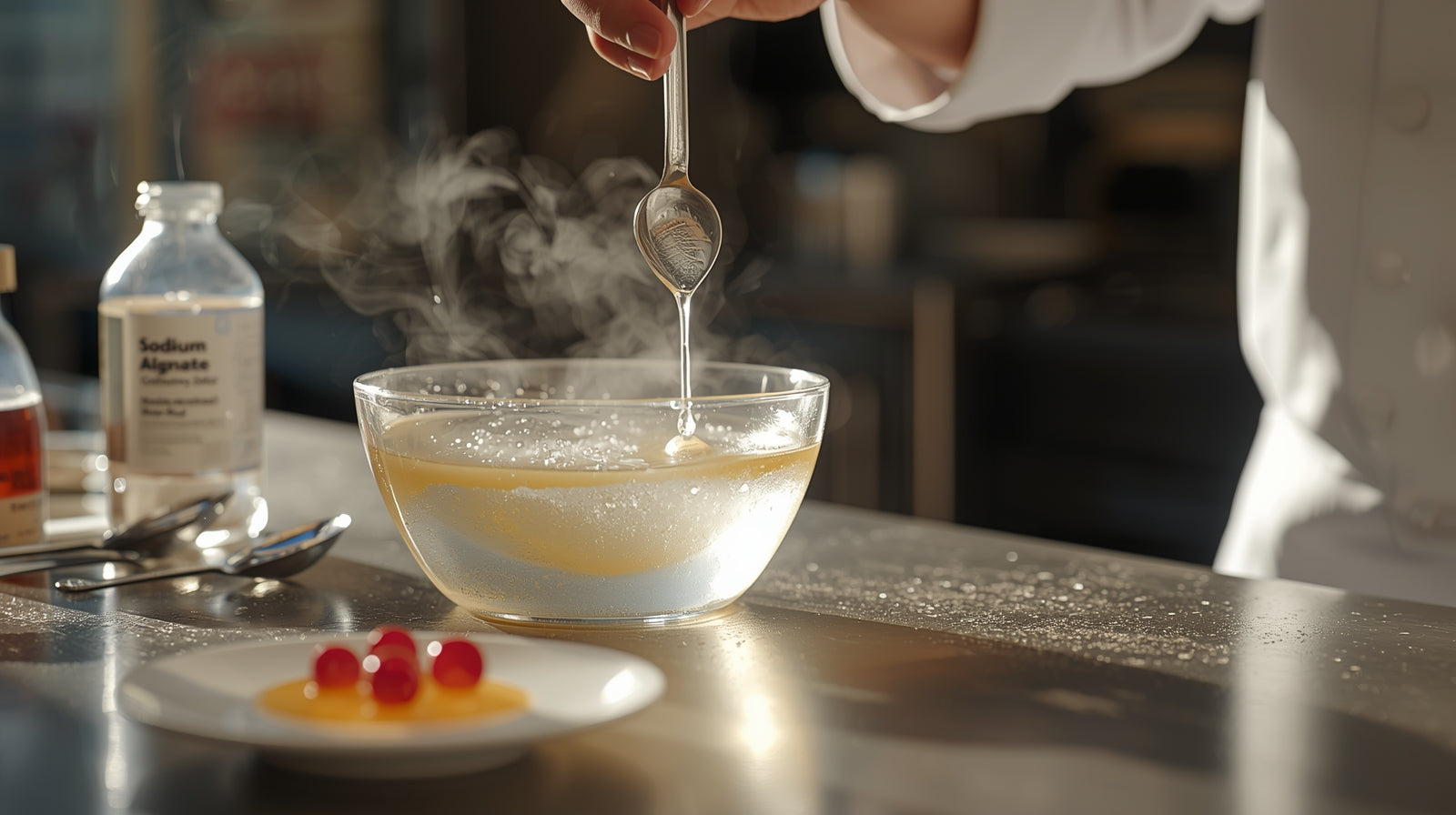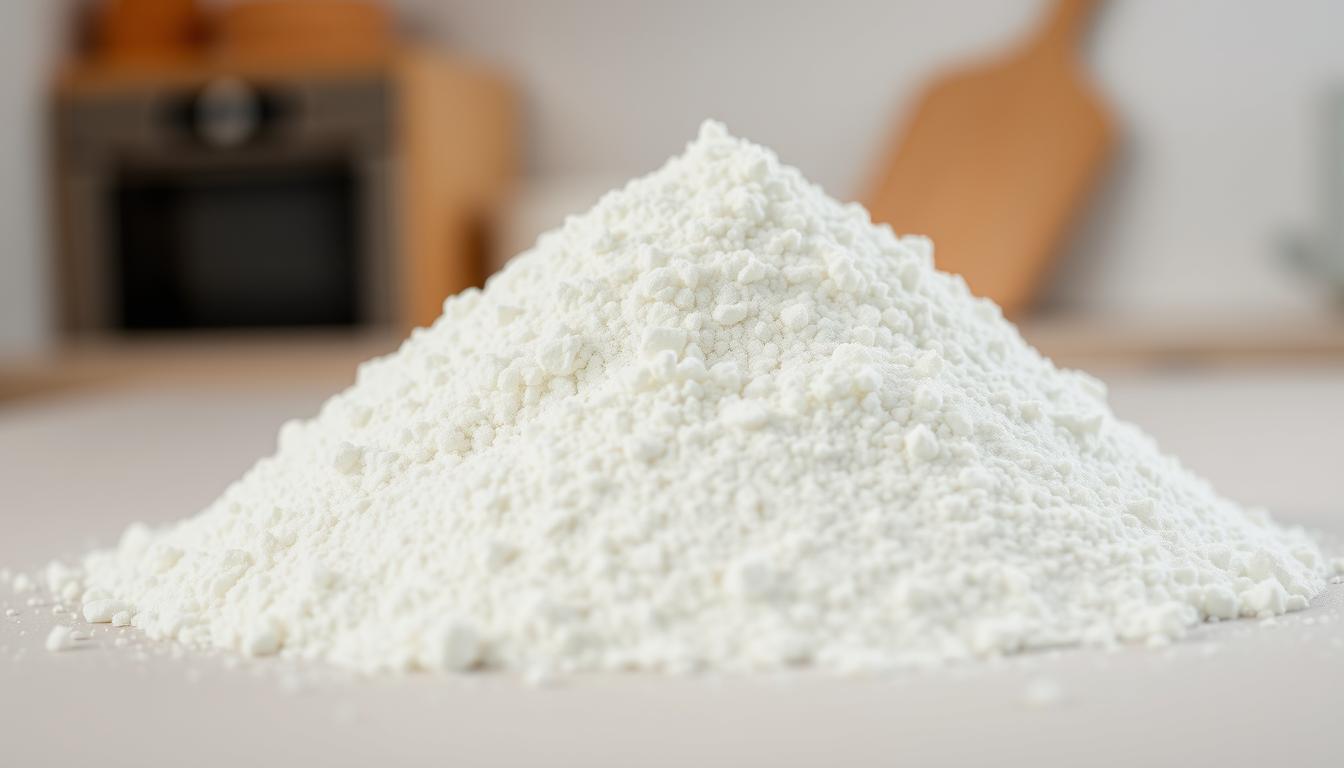
Beginner’s Guide to Hydrocolloids (2025 Edition)
SUBSCRIBE TO OUR BLOG
Promotions, new products, and recipes.
Welcome to the fascinating world of hydrocolloids! Whether you're a food scientist, a curious home cook, or part of the food industry, understanding hydrocolloids is essential for anyone involved in food applications and product development. These versatile ingredients play a pivotal role in shaping the texture, structure, and overall quality of food products.
In this beginner's guide, we’ll explore the unique properties and applications of hydrocolloids—from their historical use to their modern functionality. You’ll learn how these functional ingredients, derived from natural sources, are used to improve food formulations, extend shelf life, and even inspire culinary innovation.
👉 Also see our Hydrocolloid Glossary for definitions of technical terms.
What Are Hydrocolloids?
Hydrocolloids are a group of long-chain polymers known for their ability to modify texture, retain moisture, and stabilize formulations. Derived primarily from natural sources such as the guar plant, seaweed, and citrus peel, they are classified as functional ingredients because they transform food systems at a molecular level.
-
Water binding: Hydrocolloids interact with water, preventing separation and improving shelf life.
-
Viscosity control: They thicken and stabilize liquids like soups, dressings, and sauces.
-
Gel formation: Some form gels that range from brittle (agar) to elastic (iota carrageenan).
-
Emulsion stabilization: Others, like gum Arabic and lecithin, help oil and water mix. For a deeper dive into how hydrocolloids function as emulsifiers, see Hydrocolloids as Food Emulsifiers and Stabilizers.
👉 Try our Food Science Calculators to see how different gums behave in recipes.
Follow-up reading: Food Hydrocolloids: Structure, Properties, and Applications for an in-depth scientific overview.
Historical Use and Modern Context
The use of hydrocolloids dates back centuries. Ancient cooks relied on gum tragacanth and acacia gum for thickening and stabilization. In the 20th century, seaweed-derived agar and carrageenan became staples in the food and pharmaceutical industries.
In modern times, hydrocolloids are central to:
-
Traditional food processing: Improving jam, dairy, baked goods, and meat products.
-
Modernist cuisine: Creating gels, foams, and spherification (see Direct Spherification Guide).
-
Food innovation: Microbial fermentation now produces gums like xanthan and gellan, expanding functional possibilities.
👉 Check definitions of syneresis and hydration temperature in the glossary to understand key challenges.
Types of Hydrocolloids
Natural Hydrocolloids
-
Guar gum – Seed-derived, excellent thickener in cold systems.
-
Locust bean gum (carob) – Works synergistically with carrageenan and xanthan.
-
Pectin – Derived from citrus/apple; essential in jams and fruit fillings.
-
Agar – Seaweed-based, creates brittle but heat-stable gels.
Fermentation & Advanced Hydrocolloids
-
Xanthan gum – Produced by microbial fermentation; versatile thickener.
-
Gellan gum – Forms precise gels (clear or elastic depending on ions).
-
Sodium alginate – Used with calcium salts for strong gels and spherification.
👉 See our ingredient guides:
Functional Properties and Practical Applications
Hydrocolloids deliver key functional benefits:
-
Texture improvement: Creaminess in ice cream, smoothness in salad dressings.
-
Gel strength: Stable desserts, jellies, and confectionery gels.
-
Moisture retention: Extends shelf life, reduces staling in baked goods.
-
Fat replacement: Enables low-fat dairy and meat products with full mouthfeel.
-
Suspension: Keeps spices, cocoa, or fruit pulp evenly distributed.
👉 Example: Use our Thickening Calculator to test gum ratios in sauces.
A comprehensive review of hydrocolloid functions is available in Hydrocolloids as Thickening and Gelling Agents in Food
Applications Beyond Food
-
Pharmaceuticals: Capsules, controlled drug release, wound dressings.
-
Cosmetics: Thickeners in lotions, stabilizers in creams.
-
Biotech & packaging: Research into edible films and sustainable packaging.
👉 See glossary entry: Microencapsulation.
Health Benefits and Considerations
Nutritional Benefits
-
Increase dietary fiber (e.g., konjac, guar).
-
Help regulate blood sugar and promote satiety.
-
Enable healthier formulations (reduced-fat, plant-based).
Challenges & Side Effects
-
Some gums (e.g., guar) may cause digestive discomfort in high doses.
-
Interactions with other ingredients can alter gel or viscosity outcomes.
-
Storage and packaging must control water activity to prevent spoilage.
👉 Learn more in pH Tolerance and Syneresis glossary entries.
Explore Hydrocolloids Today
Hydrocolloids are more than additives—they’re tools for culinary innovation. From creamy ice cream to modernist spheres, they define textures and elevate experiences.
-
Use our Free Food Calculators to experiment.
-
Read our Hydrocolloid Glossary to learn the science.
-
Shop Cape Crystal’s Hydrocolloid Ingredients to try them in your kitchen.
Suggested FAQ Section (for readers)
Frequently Asked Questions (FAQs)
1. What are hydrocolloids used for in food?
Hydrocolloids are used to thicken, stabilize, emulsify, and form gels. Common uses include ice cream, salad dressings, baked goods, sauces, and modernist cuisine techniques like spherification.
2. Which hydrocolloids are natural?
Many hydrocolloids come from natural sources, including guar gum (from seeds), locust bean gum (carob seeds), agar and carrageenan (seaweed), and pectin (citrus peels and apple pomace).
3. What is the difference between agar and gelatin?
Agar is plant-based and sets into firm, brittle gels that withstand higher temperatures. Gelatin is animal-derived and creates elastic, melt-in-the-mouth gels that soften near body temperature.
4. Are hydrocolloids safe to eat?
Yes, most food-grade hydrocolloids are approved by regulatory bodies like the FDA and considered safe when consumed at typical levels in food.
5. How do I know which hydrocolloid to use?
It depends on your goal:
-
For thickening → xanthan gum, guar gum.
-
For gels → agar, carrageenan, gellan gum.
-
For emulsions/foams → lecithin, gum Arabic.
👉 See our Hydrocolloid Glossary for details.
6. Can hydrocolloids improve shelf life?
Yes, by binding water and stabilizing food systems, hydrocolloids help extend freshness and reduce spoilage.
How to Do Direct Spherification with Sodium Alginate
What you’ll make
Delicate, gel-skinned spheres with liquid centers (great for fruit “caviar,” pearls, or larger ravioli).
Ingredients & gear
-
250 g flavored base (e.g., strained fruit juice)
-
2.5 g sodium alginate (1.0% w/w of base) → Sodium Alginate Product
-
500 g water (for bath)
-
2.5 g calcium chloride (0.5% w/w of bath) → Calcium Chloride Product
-
Fine sieve, immersion blender, gram scale, squeeze bottle or spoon, slotted spoon
-
Optional: Spherification Calculator
Step-by-step
-
Make the alginate mix (1.0%)
Blend 2.5 g sodium alginate into 250 g cold base with an immersion blender until fully dispersed. Rest 15–30 minutes to let air bubbles rise. -
Make the calcium bath (0.5%)
Dissolve 2.5 g calcium chloride in 500 g room-temp water; stir until clear. -
Form spheres
Drip or spoon the alginate mix into the calcium bath. Small drops form pearls; larger Spoonfuls form “ravioli.” -
Set time
Let pearls set 45–90 seconds (thin membranes) or 2–3 minutes (thicker). Agitate gently so they don’t stick. -
Rinse
Lift with a slotted spoon; rinse briefly in a bowl of clean water to remove excess calcium taste. -
Serve
Use immediately for best texture; the membrane continues to thicken over time.
Tips & troubleshooting
-
Too thin? Increase bath time slightly or raise alginate to 1.2%.
-
Too firm? Shorten bath time or lower alginate to 0.8%.
-
Won’t gel? Acidic bases (pH < ~3.6) can inhibit alginate. Buffer with a little sodium citrate (~0.2–0.4%) before adding alginate. → Sodium Citrate
-
Clumping on blend? Premix alginate with a little sugar, or high-shear blend and rest to de-bubble.
-
Bitter taste? Rinse spheres thoroughly to remove calcium chloride residue.
Safety note: Calcium chloride is food-grade but tastes salty/bitter; avoid over-concentration and always rinse.

|
About the Author Ed is the founder of Cape Crystal Brands, editor of the Beginner’s Guide to Hydrocolloids, and a passionate advocate for making food science accessible to all. Discover premium ingredients, expert resources, and free formulation tools at capecrystalbrands.com/tools. — Ed |
Enjoyed this post? Subscribe to The Crystal Scoop
Food-science tips, ingredient know-how, and recipes. No spam—unsubscribe anytime.
- Choosing a selection results in a full page refresh.



